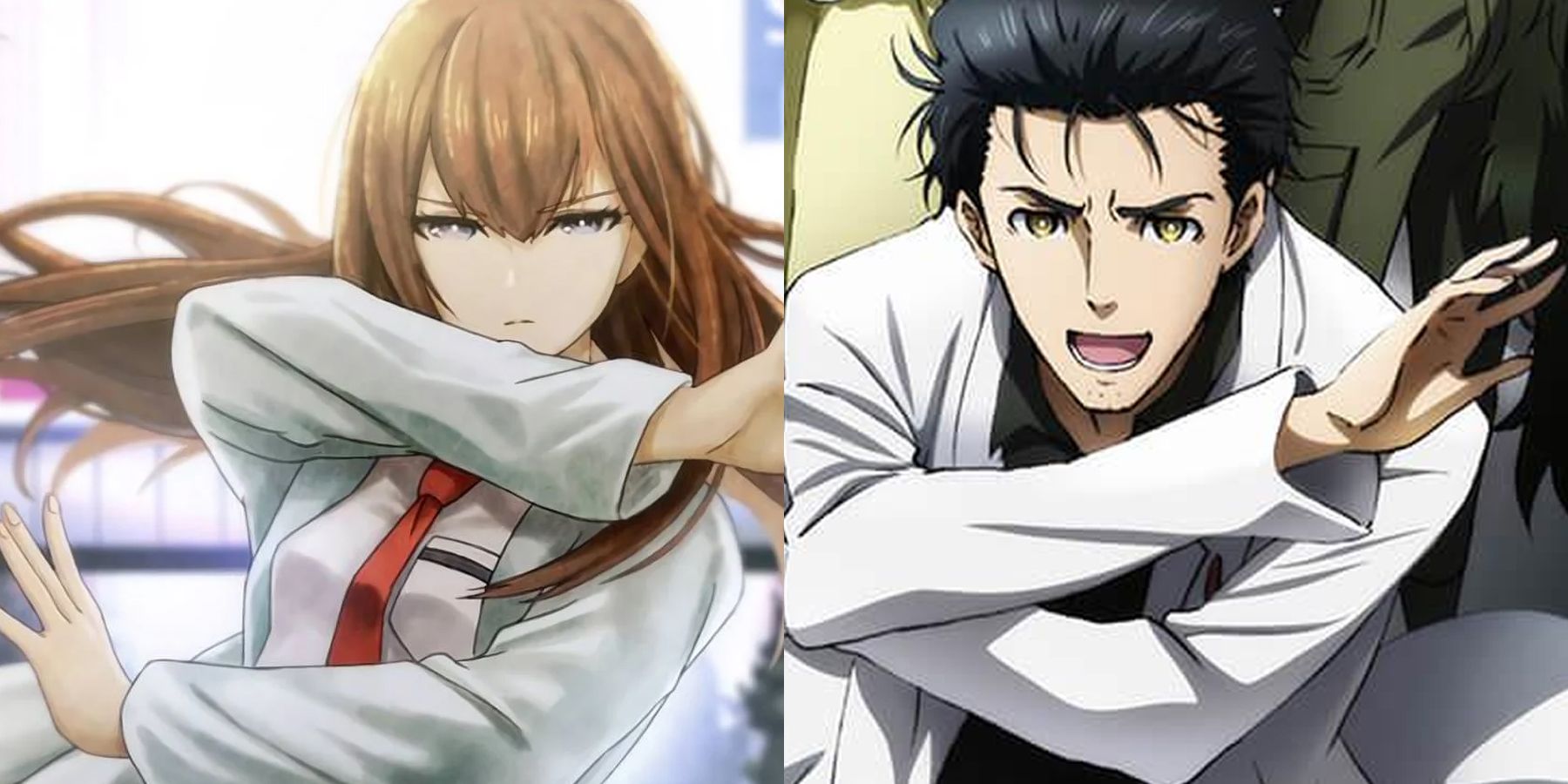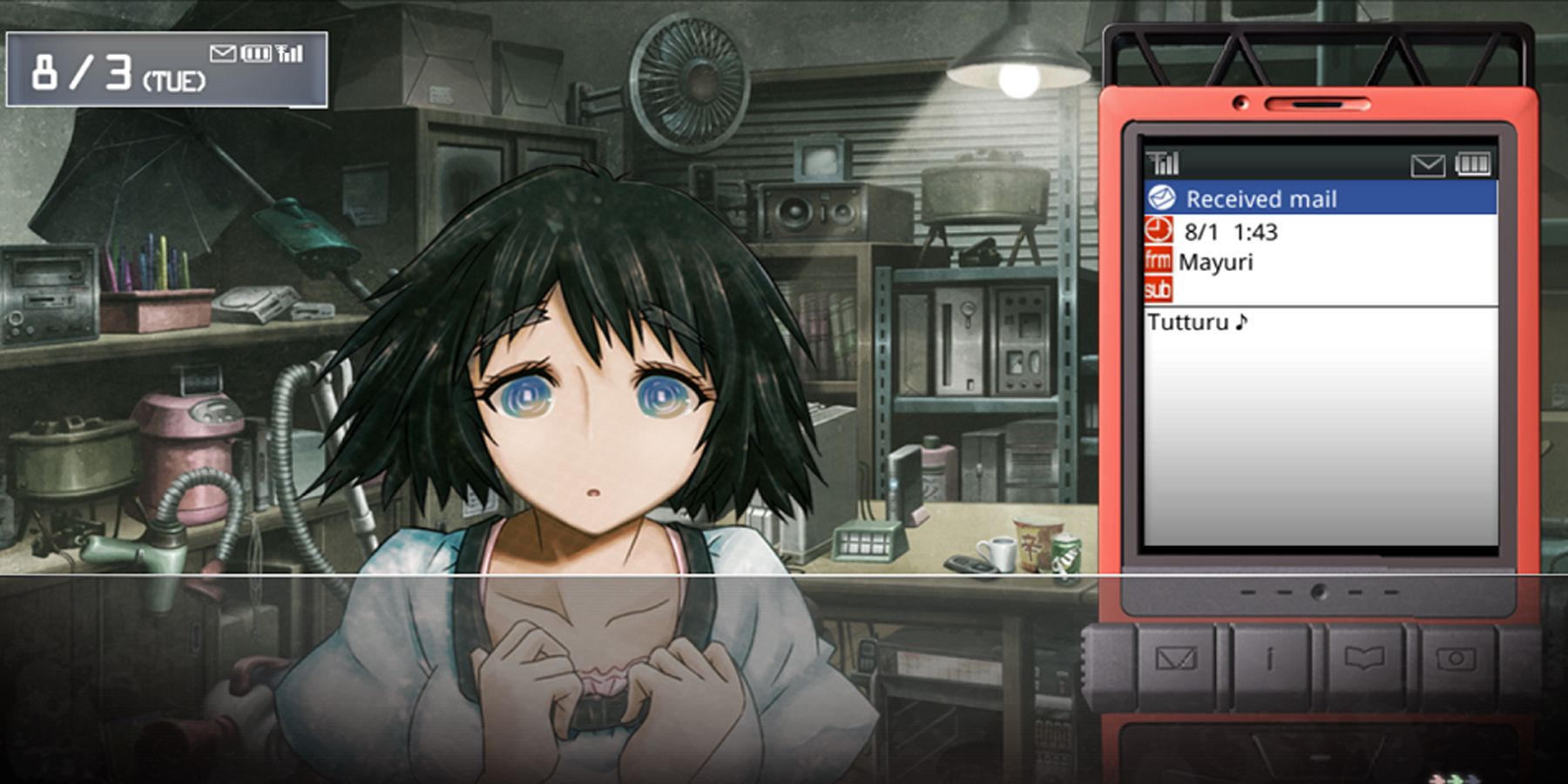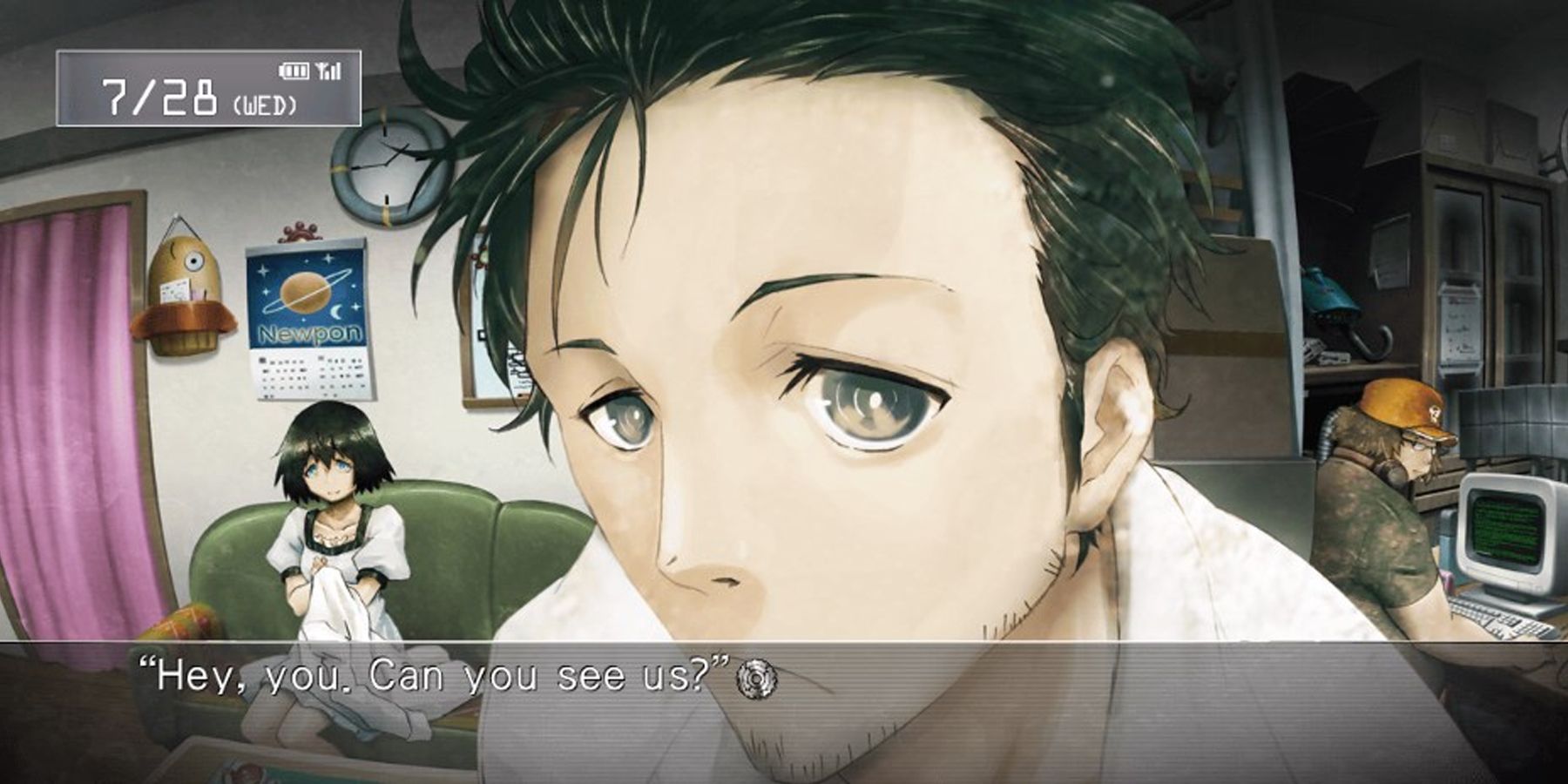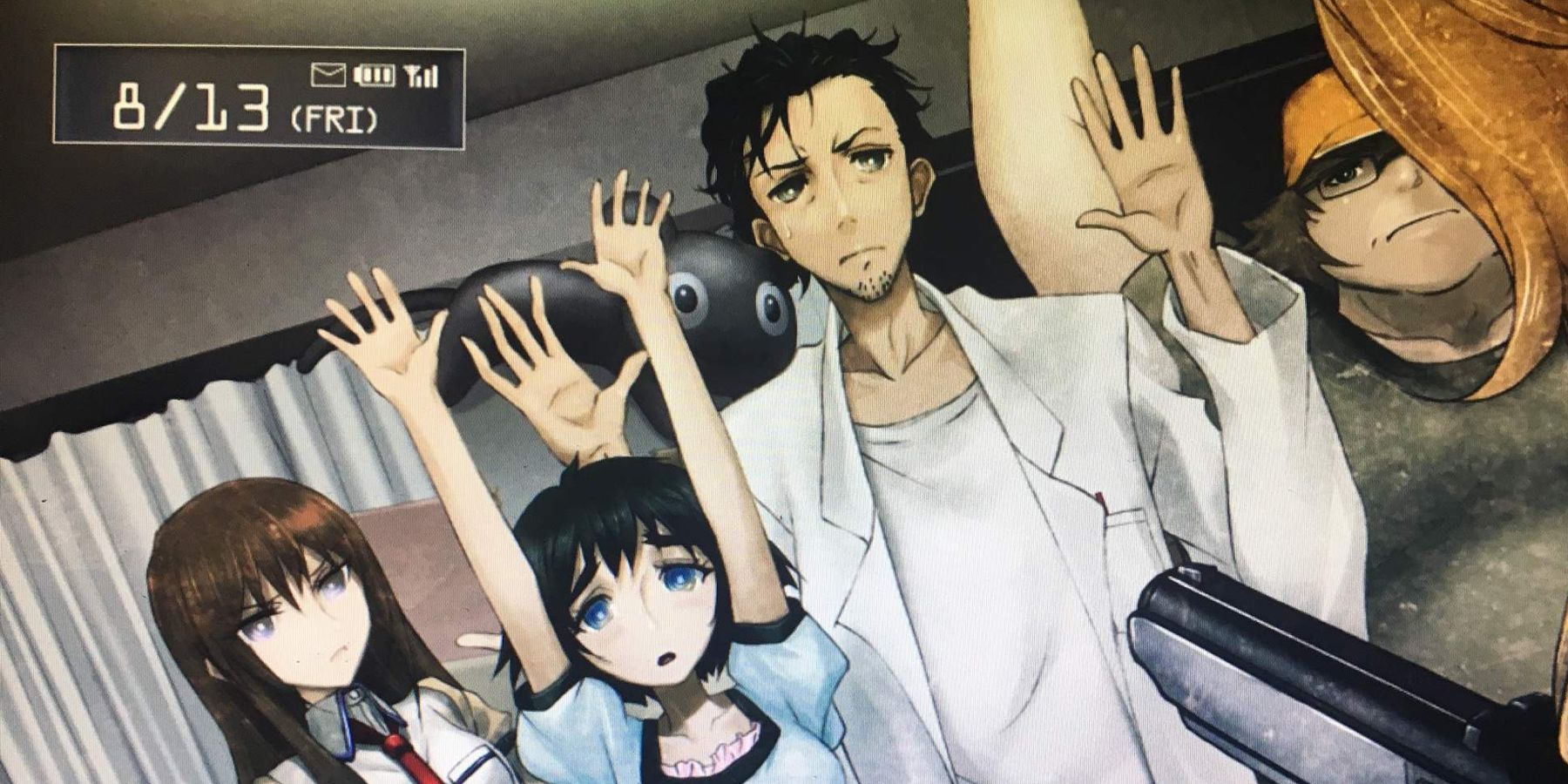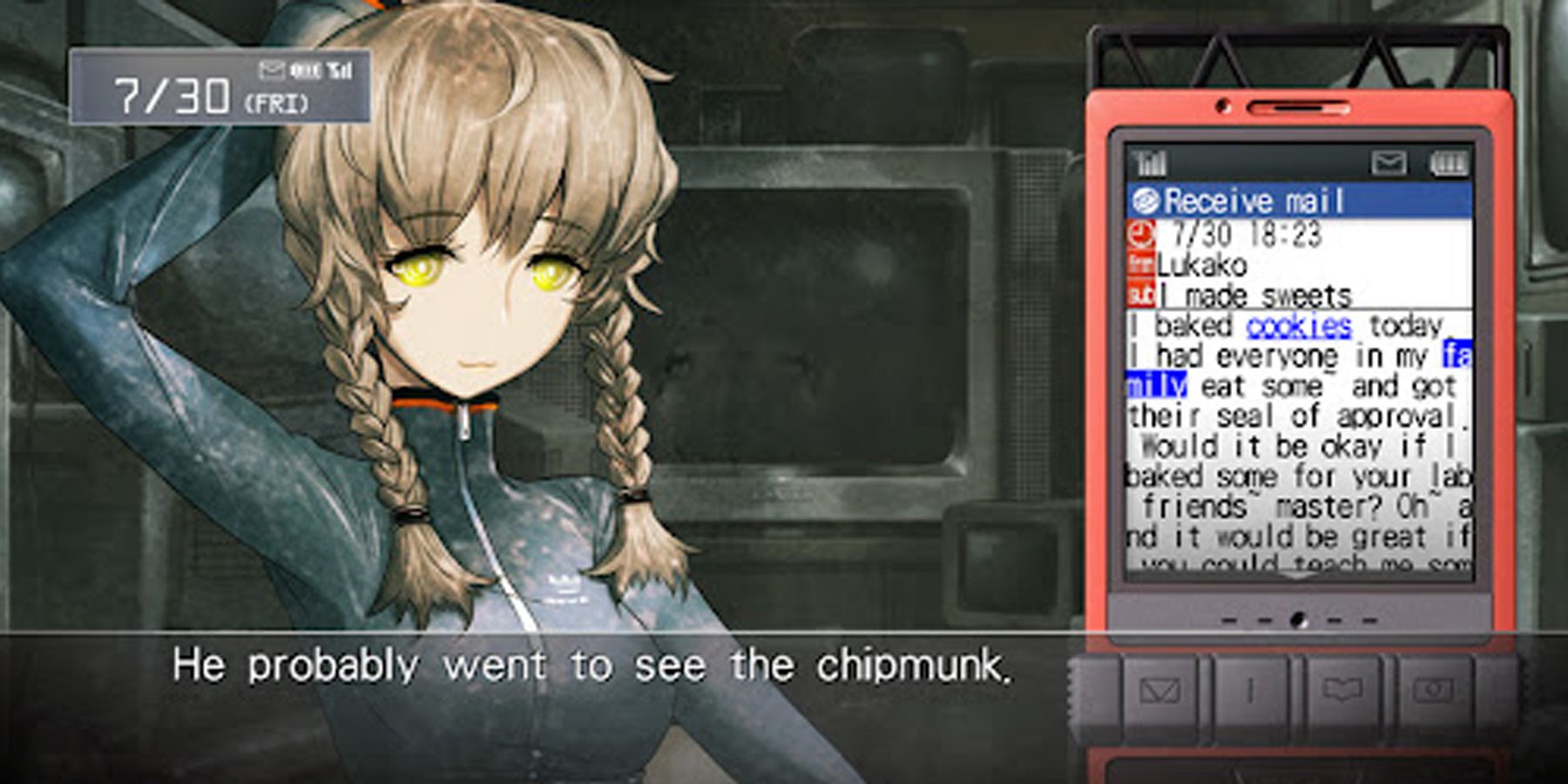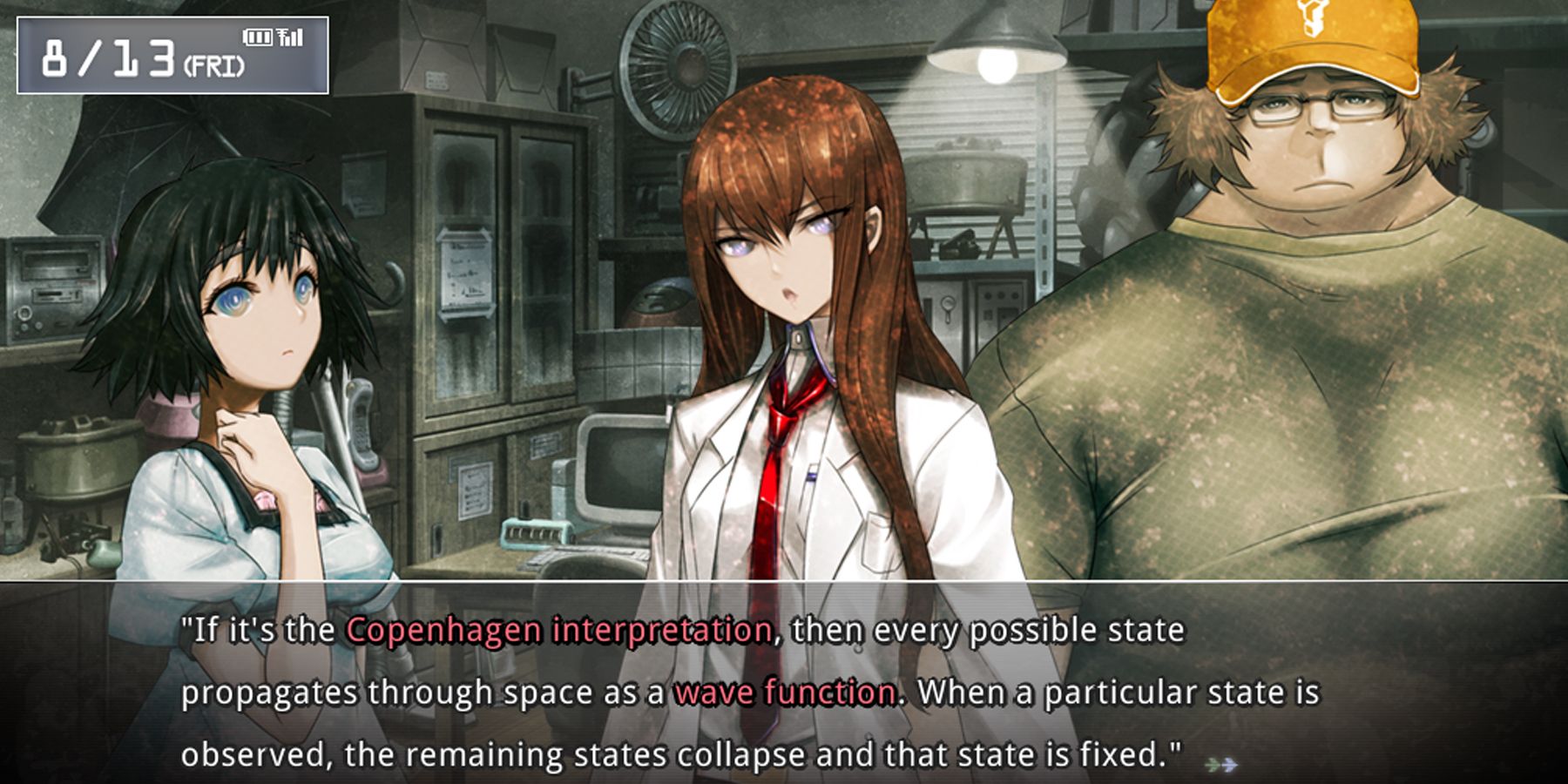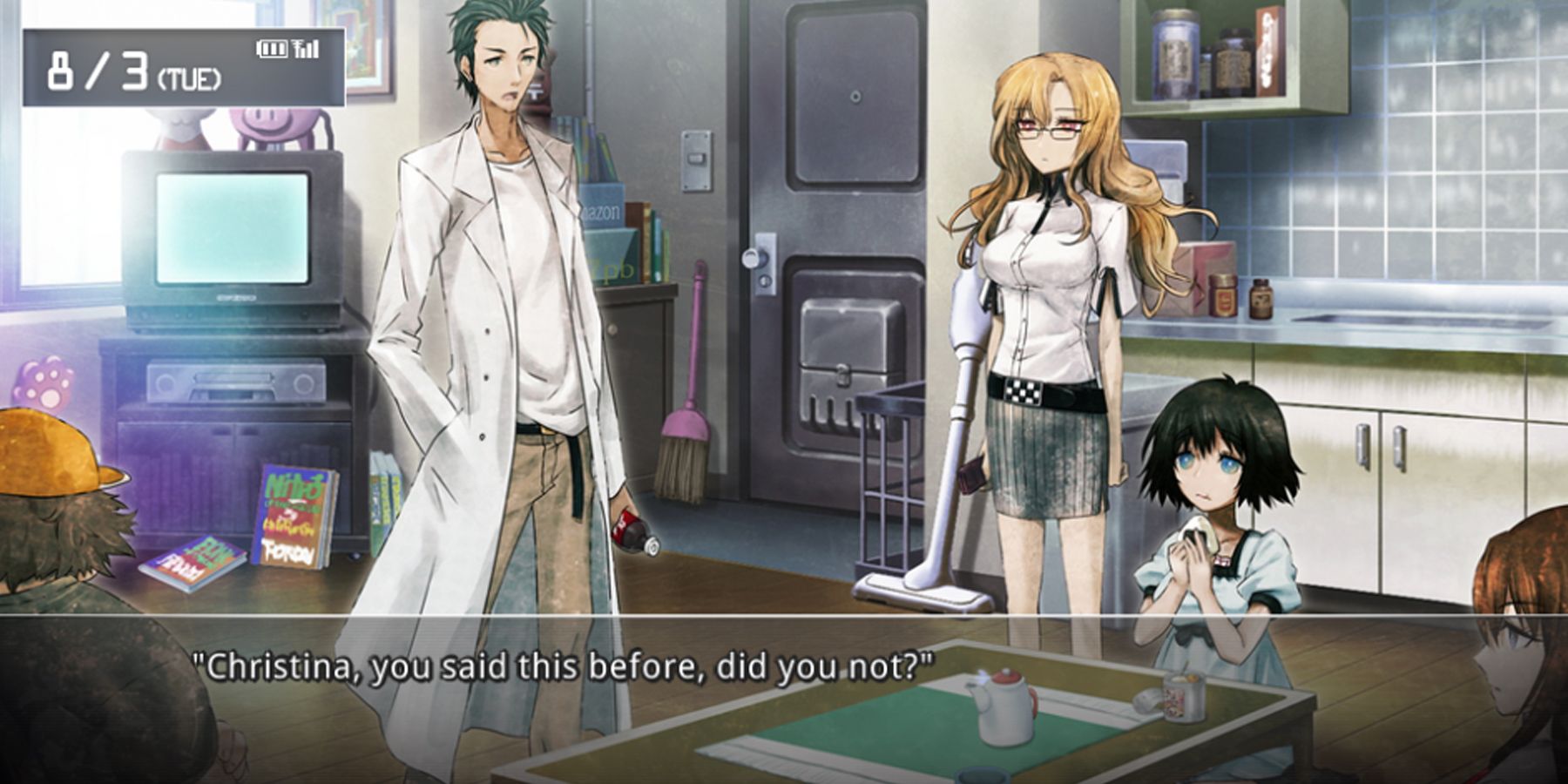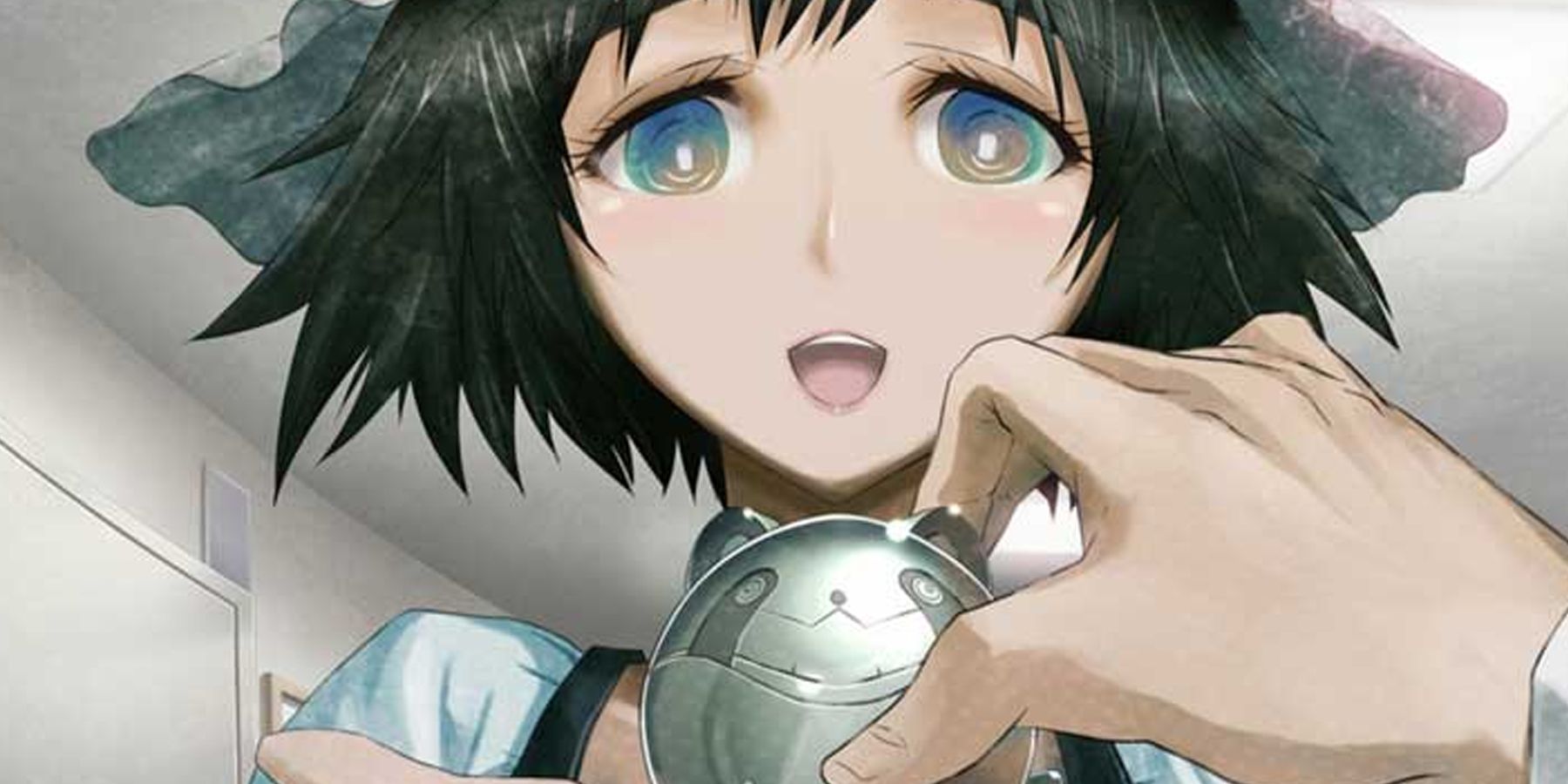What better way to showcase the consequences of time travel than with a visual novel? Thanks to Steins;Gate, fans see exactly that. Okabe Rintarou, a self-proclaimed mad scientist, and his friends accidentally discover a way to send messages back in time. And as with any sci-fi story, Steins;Gate shows just how terrible this power can get real quick.
Such was the reception of Steins;Gate that it earned itself an anime adaptation, an anime film, and even a spin-off that just explores its compact yet expansive meta. However, while the anime is indeed a simpler way to view the story, there are elements in the visual novel that make the source material far superior to the adaptation.
8 A More Complete Experience
One of the best things the Steins;Gate visual novel provides is a more complete experience surrounding the time travel misadventures of Okabe Rintarou and his friends. Being a literary material with visuals instead of simply an animated format, Steins;Gate offers a more in-depth take on exactly what transpired before, during, and after Okabe sent the pivotal D-Mails via the PhoneWave machine back in time.
All in all, this helps the visual novel propel a complete experience that doesn’t unnecessarily cut any essential story elements. This gave the anime production team more than enough material to analyze, splice, and cut for their more cohesive take.
7 Extra Features Add Immersion
The Steins;Gate game does offer a lot more features compared to a standard novel that makes it more appealing to users. These features greatly add to the player's immersion in the story’s world.
For instance, the player — as Okabe Rintarou — has access to a mobile phone that acts as the game’s main interface. With this, Okabe can not only save the game and access in-game features, but can also receive actual text messages from other characters. This adds a unique level of immersion that isn’t present in the anime, which only showed Okabe interacting with his phone.
6 No Time Constraints In Storytelling
Building on the completeness of the visual novel, the medium emphasizes a heavier take on narrative storytelling compared to other media. Compared to books that run on a preferred page number, the gamified setup of a visual novel means there’s no limit to how long 5pb. and Nitroplus would want their story to last. A longer story only meant more data consumed in a player’s hard drive.
Additionally, the ability to save at any point gives players complete freedom as to how they want to approach the visual novel’s storytelling. They can immerse themselves in the visual novel whenever they desire, and the devs can share Okabe’s suspenseful story without any constraints on length.
5 Narrative Angle Makes Things More Realistic
As with any visual novel, Steins;Gate tells things from the perspective of Okabe Rintarou’s point of view, giving him full narrative control over the story. Instead of just laying out the scene for readers, Okabe adds a bit of himself into each part of the narrative. As such, descriptions, dialogue, and even concept explainers have not just an underlying story element, but also demonstrate Okabe's thought processes.
This narrative angle adds a lot more depth to the story compared to that of the anime, as Okabe’s real thoughts and feelings add more gravity to the situation. Considering how quickly things go from 0 to 100 in the story, reading Okabe trying to sift through these things is a decidingly unforgettable experience.
4 Visuals Encourage Room For Imagination
Unlike books and the visual novel’s sister medium the light novel, VNs add a much-needed visual element to their presentation. Akin to the Western dating sim, visual novels like Steins;Gate excel in using visuals with slight effects to convey and present just enough of what’s happening to a scene, without spoon-feeding everything to the reader.
With voice acting for the dialogue, there’s a lot of room for imagination on part of the Steins;Gate player to fully enjoy what’s happening throughout the story. This slideshow-esque sequence of events provide background visuals that don’t overwhelm players as they read through Okabe’s exposition and interactions with his peers.
3 Narrative Segments Help Explain Difficult Concepts
Unlike other time travel stories, Steins;Gate tries its best to stay faithful to the physics concepts included within its time travel narrative. Rather, the visual novel goes to great lengths when it comes to elaborating concepts ordinarily reserved for more intense physics, such as Quantum Entanglement, among others.
Moreover, the existence of physicist Makise Kurisu and Okabe’s armchair knowledge on the matter really helped elaborate the bizarre nature of the events they were experiencing. Physics fans who love reading through narrative explanations of concepts will appreciate the level of accuracy the Steins;Gate visual novel has on the subject of time travel.
2 Freedom Of Choice Matters
Given how a visual novel is essentially like a dating sim, it’s important to remember that Steins;Gate does give players options to explore the stories of each lead character aside from Okabe Rintarou. A text message sent to the past can drastically affect the way the characters live their lives today, and it’s up to Okabe to try and resolve these conflicts as they arise.
Mechanically-speaking, the game does offer the option to go back and forth on crucial choices in the game that determine the final fate of each hero or heroine. More importantly, the game goes out of its way to help players understand the gravity of Okabe’s choice to tinker with time, despite how seemingly mundane the text message sent back has become.
1 Replay Value Doesn’t Downplay Emotional Impact
At first, fans might feel like it would be overwhelming to play the game once more after finishing one playthrough. However, fans of any visual novel know that the first ending they get isn’t always the intended True Ending of the story. Thanks to the time travel nature of Steins;Gate, this is something even the core narrative emphasizes.
As such, there remains an emotional impact with every playthrough of Steins;Gate. Players, as Okabe, will always have to come back to finish a path related to one of the main characters to see where their choices lead them. And only after seeing the True Ending that players can definitely see what’s actually happened to Okabe and his friends. Despite the rather long reading that this requires, playing the game once more to flesh out the details is still worth the while.
Steins;Gate was released on October 15, 2009 and is playable on the PC, PSP, PS Vita, PS3, PS4, Xbox 360, iOS, and Android.

